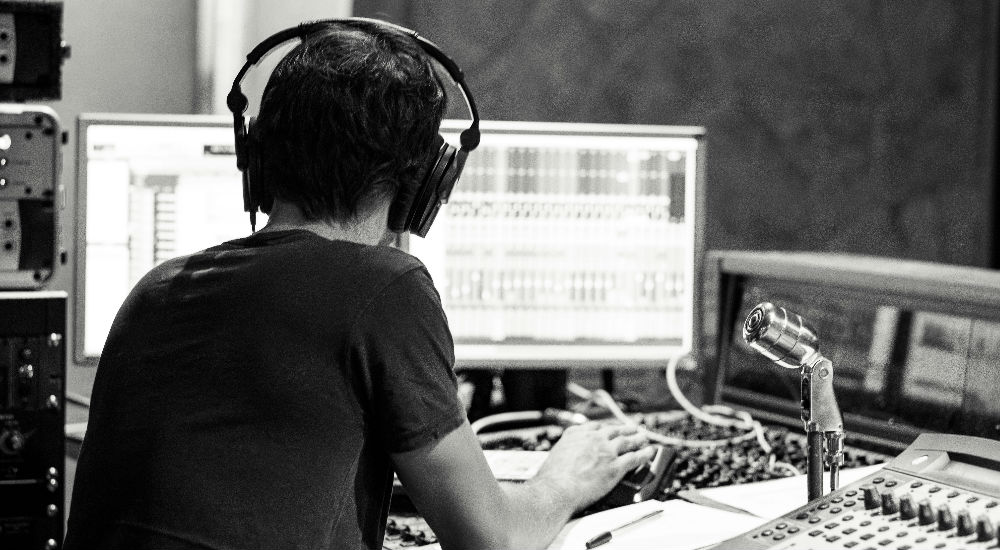An Expert’s Guide To Making A Track Come To Life With Simon Moro
For our fourth article on creating and releasing a song, Melbourne producer and engineer Simon Moro gives his expert view on mastering. Last month Moro detailed the mixing process and ended his tutorial with the claim that “Things get exciting when you’ve got the best team across each part. A killer mix, mastered by a pro mastering engineer is going to sound awesome.”
So what is mastering? It’s the final section of the recording process before a track is pressed to vinyl, submitted to radio, released online, and archived for posterity. There is a lot of faith placed in the mastering process for bringing spark and sophistication to a track.
Read all the latest features, columns and more here.
“Things you should expect from mastering include better translation across different playback devices, volume balance between songs, controlled dynamics for specific delivery mediums like CD, vinyl, Spotify, YouTube etc., and usually a little more space and separation between the recorded parts,” says Moro.
The administrative side of mastering is also very important, which includes encoding metadata in files – things such as track names, international standard recording codes (ISRCs) and CD text – as well as converting to different file formats, documenting and delivering files.
The fundamentals of mastering are fairly consistent across the genre spectrum, especially the administrative facets. However, the intensity of the process can fluctuate considerably depending on the style of song and the production characteristics.
“For example, if I’m mastering a classical-crossover record I’m still going to use EQ, compression and limiting, but I’ll be less aggressive with my processing than if I was mastering hip hop or indie, which might call for added saturation and more aggressive compression and limiting,” Moro says.
Despite being an indispensable part of the procedure, mastering remains a great mystery to many musicians. There is often an expectation that a mastering engineer can transform the song more dramatically than is possible. Moro outlines some of the common misconceptions around mastering.
“The biggest misconception is that you can record something DIY, send it off to a mastering engineer and it will suddenly sound like a million dollars has been spent on it,” he says. “It’s kind of like building a rickety shack and hiring the most expensive painter to paint the exterior. Sure it will look a lot better than if they upload the shack for online painting, or do it themselves, but it’s still a rickety old shack. A song is definitely the sum of the parts.”
The DIY approach is more popular than ever, with many artists sidestepping mastering entirely to directly upload tracks to streaming platforms and online retailers. Moro underlines the necessity of mastering, starting with translation.
“Translation is how a song sounds from one system to another,” he says. “Many artists will be familiar with loving the track in the studio then playing it at home or in the car and feeling underwhelmed, or worse, concerned and experiencing self doubt. That difference is a translation issue.”
Every room and set of speakers has a sonic fingerprint that will cut and boost frequencies all across the spectrum, says Moro.
“If you’re mixing in a room that turns bass down, you’ll turn bass up in the digital audio workstation or on the mixer – not because it’s missing from the material, but because the room or speakers are removing it. So when you play that song somewhere else where the room and speakers aren’t turning the bass down, well, the bass will be too loud. And if you play it in a room with speakers that turn the bass up, the bass will be really loud!
“Think of it like wearing tinted glasses while painting and trying to match colours accurately. If your music is released without having these translation issues fixed, it could sound very poor on some playback systems, which could affect people listening to and buying your music.”
Studios are equipped with high quality speakers and headphones and everything is sent through great amps. But once a track’s released, people listen through car stereos, laptop speakers, earbuds and portable Bluetooth speakers. Moro acknowledges it’s impossible for the mastering process to factor in the multiplicity of possible listening environments.
“The number of times I’ve had an artist say, ‘Can you turn the bass up?’ when they are listening on an old laptop,” Moro says. “Also challenges like the distance between speakers can affect the perceived balance of a song. I might have an artist say the vocals are too soft, and when asking about their speakers it turns out they are spaced too far apart.
“Speakers that are too far apart will make things panned to the centre sound softer than they are. And if the speakers are too close together, those things will sound louder than they are. That’s why vocals usually sound louder on small Bluetooth speakers, because the left and right speakers are very close together. Also, listening in headphones affects the perceived volume of vocals.”
Moro checks his mixes through a pair of Grover Notting Code 101 mastering series monitors and their CR1 cross-reference monitors, which are small, single driver speakers. “I also test on some AKG headphones and a Bose Soundlink Mini,” he says. “I also have a spectrum analyser as a final check for reference.”
And what technology, programs and devices does Moro prefer to use for the bulk of the mastering process?
“I generally use Pro Tools for the processing part of mastering. I use a combination of plugins and mastering outboard gear. Sometimes I do it all with plugins. It depends what the track needs. I then do file conversion, metadata encoding and generate disc description protocols for CD pressing in Wavelab.”
The plugins he uses in most mastering sessions include FabFilter’s EQ, multiband compressor and limiter. “I also use Brainworks mastering EQ, Waves L16, and a few metering plugins from Waves, NuGen and Meterplugs. Hardware wise I have a few mastering boxes from Manley, IGS, Gem Audio, TK Audio, Kush Audio and Avalon.”
The room and monitors are the most essential tools. If they aren’t right, then mastering is going to be challenging.
“I know some very experienced mastering engineers that get great results just with software, although most use a hybrid approach,” Moro says. “I think even just one good analogue compressor and EQ can add a great flavour to a master.”
To maximise results, you need the best team across each part. Compensating for deficiencies in the mix – such as the bass needing a boost or the vocals not sitting right – isn’t strictly speaking a mastering engineer’s job. As Moro explains, attempts to account for these issues will have an impact on other areas of the recording.
“In mastering, I can increase the perceived volume of the bass, or decrease it, but it’s going to affect every other sound with that frequency. Even when using fancy mid/side techniques, dynamic EQ and automation, it’s still better to address at early stages.”
Head to Simon’s website to book a session with Melbourne’s mastering maestro today.

